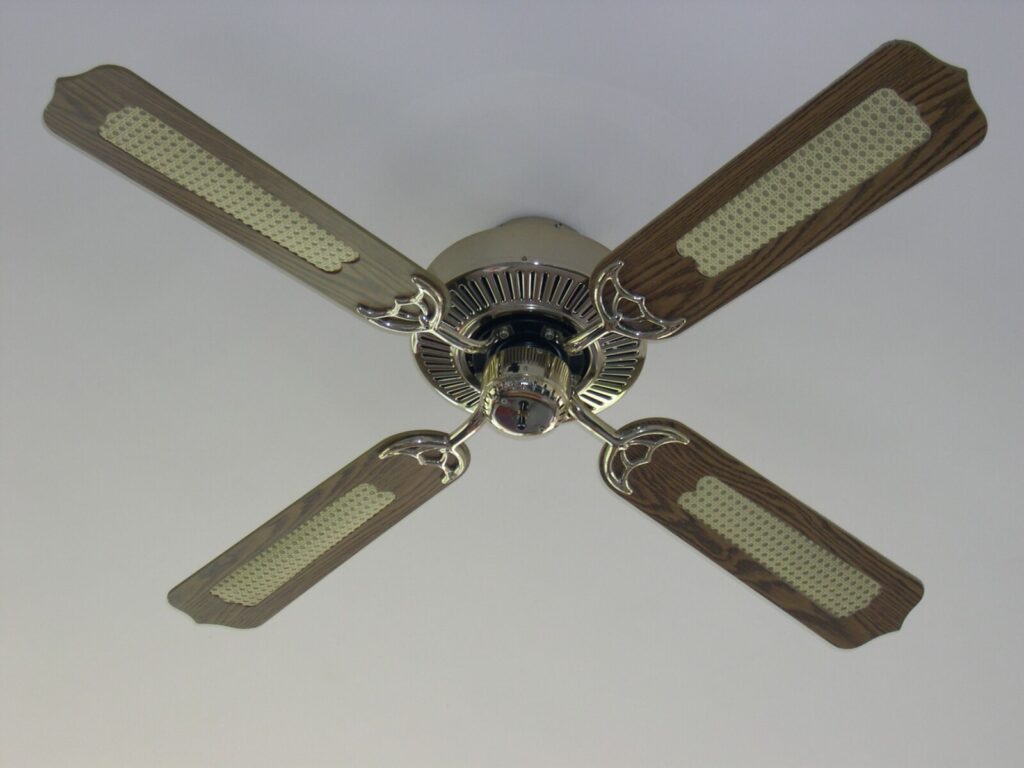How To Balance A Ceiling Fan Like A Pro!
A ceiling fan is a great way to keep cool in the summer or circulate air around your house. But if your ceiling fan is wobbling or making noise, it’s time for you to take action and balance out those blades!

How to Balance Your Ceiling Fan in 7 Easy Steps
For A Wobbling Or Shaking Fan, You Need To Balance The Blades.
For a wobbling or shaking fan, you need to balance the blades.
Balancing the blades will help the fan run more smoothly and quietly, which can be an essential aspect in some areas of your home. It’s crucial for safety reasons, as well—a wobbly ceiling fan can easily fall from its mount and cause injury to someone standing below it.
Turn Off The Fan
First, use a fan switch to turn off the electricity running to the ceiling fan to turn off the electricity. If you don’t have a fan switch and are using an older or non-electrical model of ceiling fan, you’ll need to shut off power at each of these places:
- The fuse box
- The circuit breaker panel
- The power outlet
Tighten The Screws On The Blade Brackets

For A Wobbling Or Shaking Fan, You Need To Balance The Blades
It’s also important to ensure that each screw is tightened evenly and properly. You don’t want one blade bracket tighter than the other or for any screws to be loose.
Clean The Fan And Blades

Clean The Fan And Blades
It’s important to clean the fan and its blades before balancing. It’s easier to see how it’s balanced if you can see into the blade assembly. Remove the blade screws, usually located at the top or bottom of each blade. If there are any decorative covers on the fan, remove them, so they don’t get damaged while cleaning.
Once all of your blades are detached from the motor housing (or whatever part of your fixture holds them in place), wipe down each one with a soft cloth dipped in warm water and wrung out until no excess moisture remains. Dry each blade off thoroughly with another soft cloth before reattaching it to your ceiling fan so that it does not drip onto anything below—especially carpeting!
Now turn on your ceiling fan to examine its exterior for dirt or dust buildup that will affect how well balanced it is when spinning at high speed. This is especially important if your home has pets, as they tend to shed fur; throughout their day-to-day activities!
Mark The Blades With Tape
To balance the blades, you’ll need to mark their edges. You can use masking tape for this.
- Mark one edge of each blade with a piece of masking tape approximately 1 inch long. This should be near the top of each blade (where it meets its hub).
- Mark another edge of each blade at its center point using the second piece of masking tape that is no longer than 6 inches long. Please make sure these two pieces are placed directly across and form an imaginary line from top to bottom on each blade. When appropriately balanced, your ceiling fan should spin smoothly without wobbling around too much or seeming off balance!
Level The Edges Of Each Blade
After the blades have been mounted to the ceiling, it’s time to ensure they’re level. While you’re at it, make sure they’re also equal distances from all of the other points on your fan:
- The blades should be even with each other and equally spaced from each blade in a circle around them. This will ensure that air will move evenly throughout your room when you start spinning them.
- Each blade should be level with its neighbors and straight up and down after being secured in place by its screws (or bolts). If one side is higher than another or bent slightly out of shape, this could damage how well your ceiling fan works overall!
Try A Balancing Kit
If you buy a fan that does not have weights, you can purchase different balancing kits to add to the blade arms. These kits include a few weights explicitly designed for this purpose and will typically provide instructions on how much weight should be added based on the size of your fan. By adding these weights in the same way you would add regular blades (described earlier), you’ll ensure that your fan continues spinning smoothly without disrupting airflow or causing damage from excess vibrations.
A balancing kit may cost anywhere from $5–$20 per set of extra weights and is available at most home improvement stores or online retailers like Amazon and eBay.
Add Weights
Before you can balance the fan, you’ll need to add some weight. You can add weight in the following ways:
- Use washers. They’re small and easy to find in your local hardware store. Just make sure that they’re not painted or powder-coated—you don’t want them weighing down the blades too much!
- Use weights. If you don’t have any washers lying around, you can also use weights as an alternative way of balancing your fan. You’ll need something heavy enough to hang from the bottom of one blade without falling off, yet light enough that it won’t weigh down too far toward the base of the blade (which will make things worse). Something like a quarter should work perfectly here!
Now that we’ve got everything we need out on display, let’s get started with our project:
Once You Have Balanced One Blade, Move On To Another Blade, Etc., Until They Are Balanced.
Now that you have balanced one blade, turn the fan back on and off again. If the light still flashes, move on to another blade and repeat the process until all blades are balanced. If one of your blades is still not balanced, turn off your fan and start over from step 1.
1StopLighting has a huge selection of lighting products, including fan accessories and lighting for fans. Many of these items on offer are available at a discounted price, in conjunction with coupon codes from the site.
Conclusion
This is more common than you think. If your ceiling fan is wobbling or shaking, then a few things can cause this. The fan blades need balancing, and sometimes they need to be tightened up. There are also some other things like cleaning them and adding weights onto them to help with this problem! You can also use a balancing kit.


